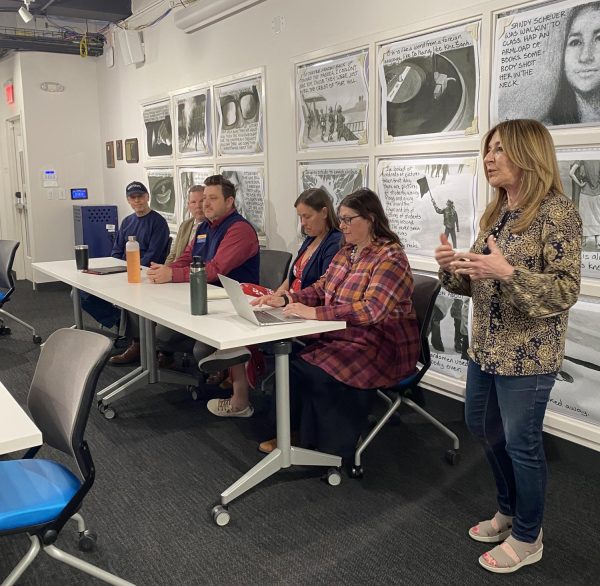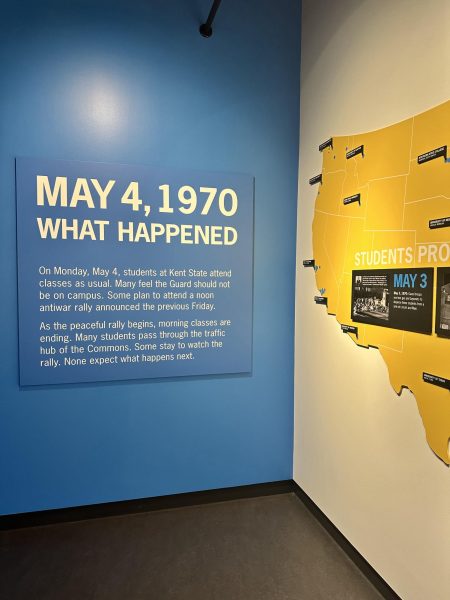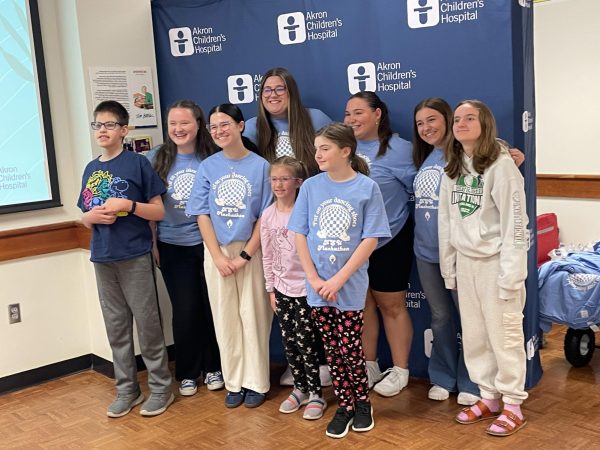Green Dot creates bystander awareness
November 17, 2015
Green Dot approaches power-based personal violence from a unique angle: the bystander. Through skill-based education, Green Dot hopes to teach all members of the community, that there are ways to intervene.
“(Green Dot is) trying to change the culture around bystanders you know, really sending a message that violence isn’t tolerated at Kent State and everyone does their part,” said Jennifer O’Connell, program coordinator for Sexual and Relationship Support Services (SRVSS). “We try to tell people that intervening doesn’t involve confrontation, there’s a lot of different things to do.”
Green Dot launched in fall of 2014 and approximately 400 faculty, staff and students have undergone the full bystander workshop, O’Connell said in an email response. Even more have heard introductions or overview talks about the program, and the number continues to grow as word spreads.
Suzy D’Enbeau, assistant professor of communication studies, said there are roughly 30 Green Dot educators on campus, and each regional campus has educators, too.
O’Connell said that along with other SRVSS programs, Green Dot is helping to change the culture at Kent State, but the message needs to be universal.
“Whether it’s faculty members who post a Green Dot message on their boards, or their syllabus or in a powerpoint, just to show its part of that the word is out there, that this is a resource,” O’Connell said. “It’s getting the whole campus to share that message and the bystander message. That’s when we really start to change the culture, when it becomes part of the culture.”
D’Enbeau said Green Dots’ focus on the bystander ensures everyone is included in the conversation.
“Green Dot is an opportunity to get everyone involved and move beyond the numbers and to articulate how this issue is something that affects everybody,” D’Enbeau said. “Everybody is a bystander at some point in their life.”
D’Enbeau said that Green Dot articulates the difference between being an active or passive bystander and that no matter your “barriers” — like being too shy to confront someone — there are ways to help. Intervening, delegating and distracting can make a difference in just a matter of seconds. The program targets those with social influence — upperclassman and trendsetters — to help change the culture.
“It’s first getting people to wrap their heads around the idea that making a choice to do nothing is not neutral, it’s a choice to do nothing. It has consequences and you have to live with that,” D’Enbeau said. “From a Green Dot perspective, we don’t care what you do, just do something.”
Ian Flickinger is the administration reporter for The Kent Stater. Contact him at [email protected].
























